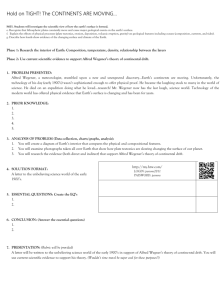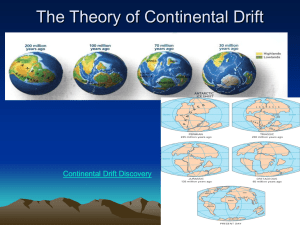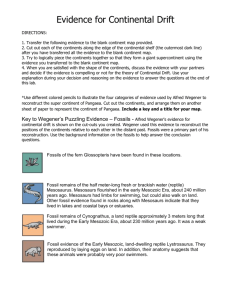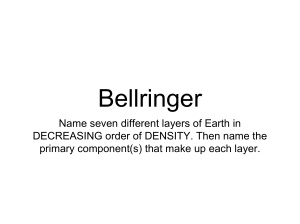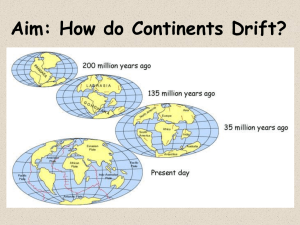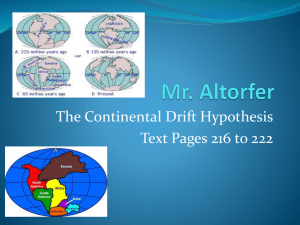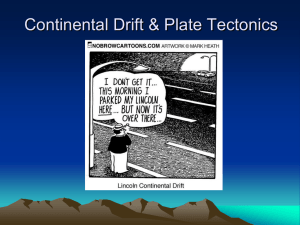Earth Science Review
advertisement
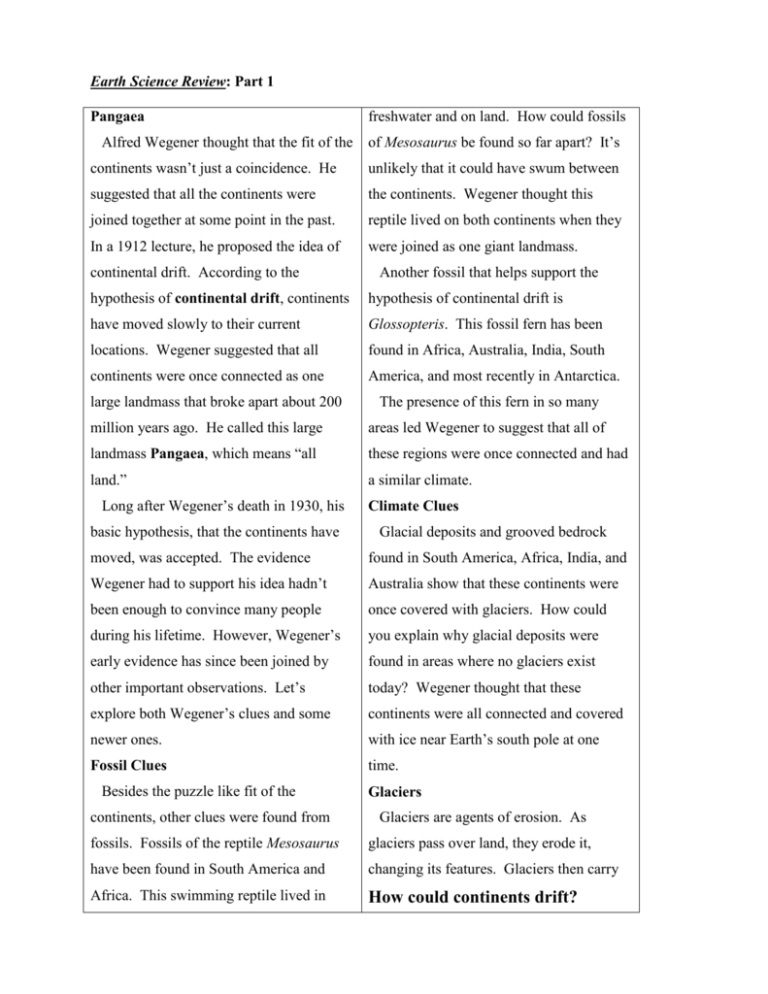
Earth Science Review: Part 1 Pangaea Alfred Wegener thought that the fit of the freshwater and on land. How could fossils of Mesosaurus be found so far apart? It’s continents wasn’t just a coincidence. He unlikely that it could have swum between suggested that all the continents were the continents. Wegener thought this joined together at some point in the past. reptile lived on both continents when they In a 1912 lecture, he proposed the idea of were joined as one giant landmass. continental drift. According to the Another fossil that helps support the hypothesis of continental drift, continents hypothesis of continental drift is have moved slowly to their current Glossopteris. This fossil fern has been locations. Wegener suggested that all found in Africa, Australia, India, South continents were once connected as one America, and most recently in Antarctica. large landmass that broke apart about 200 The presence of this fern in so many million years ago. He called this large areas led Wegener to suggest that all of landmass Pangaea, which means “all these regions were once connected and had land.” a similar climate. Long after Wegener’s death in 1930, his basic hypothesis, that the continents have Climate Clues Glacial deposits and grooved bedrock moved, was accepted. The evidence found in South America, Africa, India, and Wegener had to support his idea hadn’t Australia show that these continents were been enough to convince many people once covered with glaciers. How could during his lifetime. However, Wegener’s you explain why glacial deposits were early evidence has since been joined by found in areas where no glaciers exist other important observations. Let’s today? Wegener thought that these explore both Wegener’s clues and some continents were all connected and covered newer ones. with ice near Earth’s south pole at one Fossil Clues time. Besides the puzzle like fit of the continents, other clues were found from Glaciers Glaciers are agents of erosion. As fossils. Fossils of the reptile Mesosaurus glaciers pass over land, they erode it, have been found in South America and changing its features. Glaciers then carry Africa. This swimming reptile lived in How could continents drift? eroded material along and deposit it Although Wegener provided evidence to somewhere else. Glacial erosion and support his hypothesis of continental drift, deposition change large areas of Earth. he couldn’t explain how, when, or why Rock Clues these changes had taken place. Because If the continents were connected at one other scientists at that time could not time, then rocks that make up the provide explanations either, Wegener’s continents should be the same. Similar idea of continental drift was rejected. The rock structures are found on different idea was so different that most people continents. Parts of the Appalachian closed their minds to it. Mountains of the eastern United States are Rock, fossil, and climate clues were the similar to those found in Greenland and main lines of evidence for continental drift. western Europe. If you were to travel to After Wegener’s death, more clues were eastern South America and western Africa, found and new ideas that supported you would find rock structures that are continental drift were discovered. One of similar. Rock clues like these support the these new ideas, seafloor spreading, helped idea that the continents were once provide an explanation of how the connected. continents could move. Comprehension Questions 1. Define continental drift 2. Define Pangaea 3. What hypothesis suggests that continents have moved over time? 4. What did Wegener call the large landmass that broke apart to form the continents? 5. Fossils of what freshwater reptile found in both Africa and South America provided support for continental drift? 6. State one reason why Wegener’s ideas about continental drift were not accepted?
